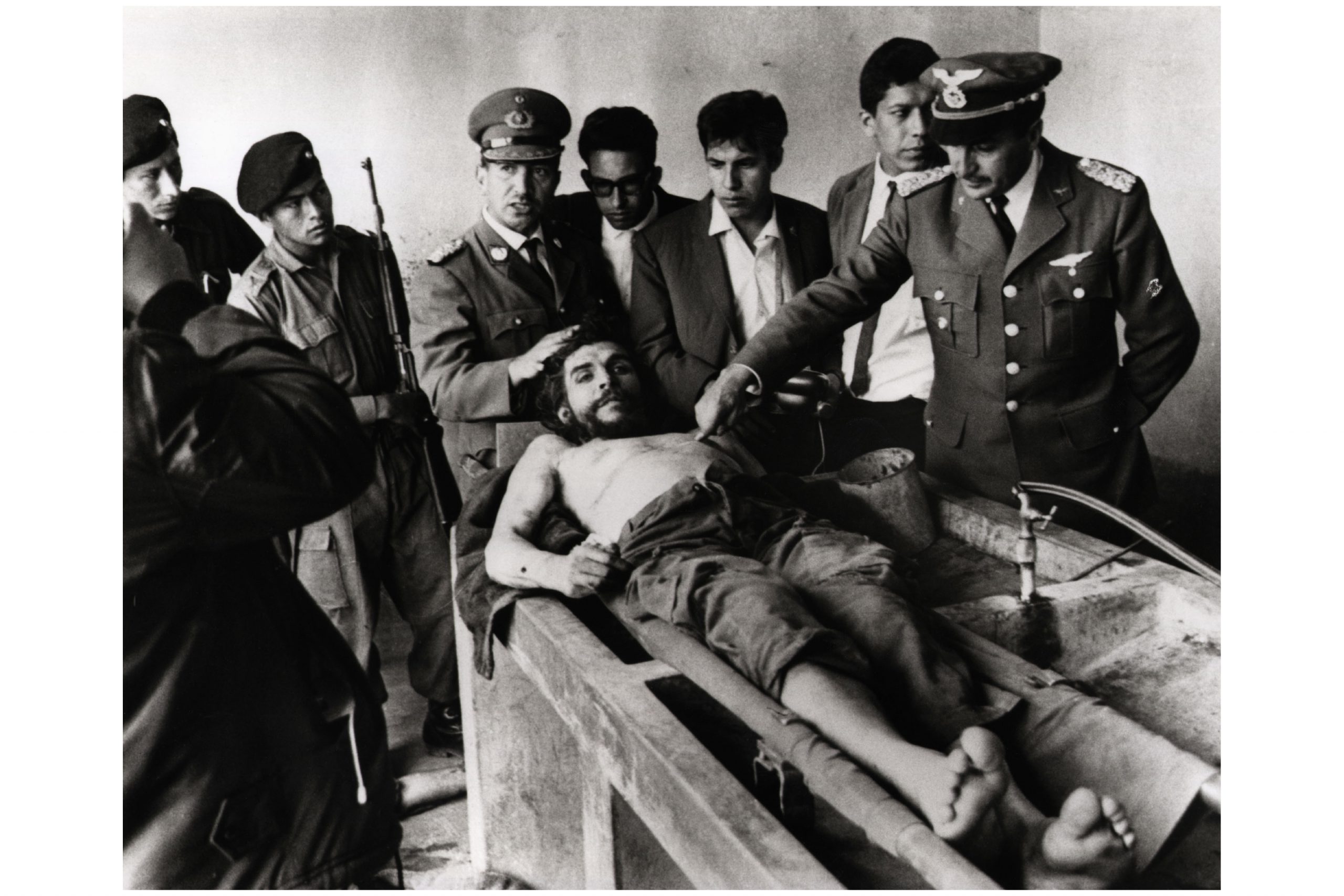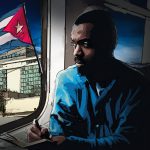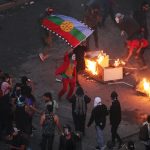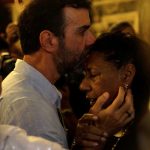From the Archive | The photo meant to end Che Guevara’s legend
In this first of a two-part series, art critic and intellectual John Berger analyses the photograph of the revolutionary’s dead body, comparing it to two famous paintings.
Author:
23 January 2020

John Berger wrote the seminal Ways of Seeing, a feminist study of images from popular culture and art. This essay was first published in The Look of Things: Essays by John Berger edited by Nico Stangos (Viking, 1959).
On Tuesday 10 October 1967, a photograph was transmitted to the world to prove that Guevara had been killed the previous Sunday in a clash between two companies of the Bolivian army and a guerrilla force on the north side of the Rio Grande river near a jungle village called Higueras. (Later this village received the promised reward for the capture of Guevara.) The photograph of the corpse was taken in a stable in the small town of Vallegrande. The body was placed on a stretcher and the stretcher was placed on top of a cement trough.
During the preceding two years “Che” Guevara had become legendary. Nobody knew for certain where he was. There was no incontestable evidence of anyone having seen him. But his presence was constantly assumed and invoked. At the head of his last statement – sent from a guerrilla base “somewhere in the world” to the Tricontinental Solidarity Organisation in Havana – he quoted a line from the 19th-century revolutionary poet Jose Marti: “Now is the time of the furnaces, and only light should be seen.” It was as though in his own declared light Guevara had become invisible and ubiquitous.
Now he is dead. The chances of his survival were in inverse ratio to the force of the legend. The legend had to be nailed. “If,” said The New York Times, “Ernesto Che Guevara was really killed in Bolivia, as now seems probable, a myth as well as a man has been laid to rest.”
Related article:
We do not know the circumstances of his death. One can gain some idea of the mentality of those into whose hands he fell by their treatment of his body after his death. First they hid it. Then they displayed it. Then they buried it in an anonymous grave in an unknown place. Then they disinterred it. Then they burnt it. But before burning it, they cut off the fingers for later identification. This might suggest that they had serious doubts whether it was really Guevara whom they had killed. Equally it can suggest that they had no doubts but feared the corpse. I tend to believe the latter.
The purpose of the radio photograph of 10 October was to put an end to a legend. Yet, on many who saw it, its effect may have been very different. What is its meaning? What, precisely and unmysteriously, does this photograph mean now? I can but cautiously analyse it as regards myself.
There is a resemblance between the photograph and Rembrandt’s painting of The Anatomy Lesson of Professor Tulp. The immaculately dressed Bolivian colonel with a handkerchief to his nose has taken the professor’s place. The two figures on his left stare at the cadaver with the same intense but impersonal interest as the two nearest doctors on the professor’s left. It is true that there are more figures in the Rembrandt – as there were certainly more men, unphotographed, in the stable at Vallegrande. But the placing of the corpse in relation to the figures above it, and in the corpse the sense of global stillness – these are very similar.
Nor should this be surprising, for the function of the two pictures is similar: both are concerned with showing a corpse being formally and objectively examined. More than that, both are concerned with making an example of the dead: one for the advancement of medicine, the other as a political warning. Thousands of photographs are taken of the dead and the massacred. But the occasions are seldom formal ones of demonstration. Doctor Tulp is demonstrating the ligaments of the arm, and what he says applies to the normal arm of every man. The colonel with the handkerchief is demonstrating the final fate – as decreed by “divine providence” – of a notorious guerrilla leader, and what he says is meant to apply to every guerrillero on the continent.
I was also reminded of another image: Mantegna’s painting of the dead Christ, now in the Brera at Milan. The body is seen from the same height, but from the feet instead of from the side. The hands are in identical positions, the fingers curving in the same gesture. The drapery over the lower part of the body is creased and formed in the same manner as the blood-sodden, unbuttoned, olive-green trousers on Guevara. The head is raised at the same angle. The mouth is slack of expression in the same way. Christ’s eyes have been shut, for there are two mourners beside him. Guevara’s eyes are open, for there are no mourners: only the colonel with the handkerchief, a US intelligence agent, a number of Bolivian soldiers and the journalists. Once again, the similarity need not surprise. There are not so many ways of laying out the criminal dead.
Yet this time the similarity was more than gestural or functional. The emotions with which I came upon that photograph on the front page of the evening paper were very close to what, with the help of historical imagination, I had previously assumed the reaction of a contemporary believer might have been to Mantegna’s painting. The power of a photograph is comparatively short-lived. When I look at the photograph now, I can only reconstruct my first incoherent emotions. Guevara was no Christ. If I see the Mantegna again in Milan, I shall see in it the body of Guevara. But this is only because in certain rare cases the tragedy of a man’s death completes and exemplifies the meaning of his whole life. I am acutely aware of that about Guevara, and certain painters were once aware of it about Christ. That is the degree of emotional correspondence.
The mistake of many commentators on Guevara’s death has been to suppose that he represented only military skill or a certain revolutionary strategy. Thus they talk of a setback or a defeat. I am in no position to assess the loss which Guevara’s death may mean to the revolutionary movement of South America. But it is certain that Guevara represented and will represent more than the details of his plans. He represented a decision, a conclusion.
Related article:
Guevara found the condition of the world as it is intolerable. It had only recently become so. Previously, the conditions under which two-thirds of the people of the world lived were approximately the same as now. The degree of exploitation and enslavement was as great. The suffering involved was as intense and as widespread. The waste was as colossal. But it was not intolerable because the full measure of the truth about these conditions was unknown – even by those who suffered it. Truths are not constantly evident in the circumstances to which they refer. They are born – sometimes late. This truth was born with the struggles and wars of national liberation. In the light of the new-born truth, the significance of imperialism changed. Its demands were seen to be different. Previously it had demanded cheap raw materials, exploited labour and a controlled world market. Today it demands a mankind that counts for nothing.
Guevara envisaged his own death in the revolutionary fight against this imperialism.
“Wherever death may surprise us, let it be welcome, provided that this, our battle-cry, may have reached some receptive ear and another hand may be extended to wield our weapons and other men be ready to intone the funeral dirge with the staccato chant of the machine-gun and new battle-cries of war and victory.”
His envisaged death offered him the measure of how intolerable his life would be if he accepted the intolerable condition of the world as it is. His envisaged death offered him the measure of the necessity of changing the world. It was by the licence granted by his envisaged death that he was able to live with the necessary pride that becomes a man.
At the news of Guevara’s death, I heard someone say: “He was the world symbol of the possibilities of one man.” Why is this true? Because he recognised what was intolerable for man and acted accordingly. The measure by which Guevara had lived suddenly became a unit which filled the world and obliterated his life. His envisaged death became actual. The photograph is about this actuality. The possibilities have gone. Instead there is blood, the smell of formol, the untended wounds on the unwashed body, flies, the shambling trousers: the small private details of the body rendered in dying as public and impersonal and broken as a razed city.
Guevara died surrounded by his enemies. What they did to him while he was alive was probably consistent with that they did to him after he was dead. In his extremity he had nothing to support him but his own previous decisions. Thus the cycle was closed. It would be the vulgarest impertinence to claim any knowledge of his experience during that instant or that eternity. His lifeless body, as seen in the photograph, is the only report we have. But we are entitled to deduce the logic of what happens when the cycle closes. Truth flows in the reverse direction. His envisaged death is no more the measure of the necessity for changing the intolerable condition of the world. Aware now of his actual death, he finds in his life the measure of his justification, and the world-as-his-experience becomes tolerable to him.
The foreseeing of this final logic is part of what enables a man or a people to fight against overwhelming odds. It is part of the secret of the moral factor which counts as three to one against weapon power.
Related article:
The photograph shows an instant: that instant at which Guevara’s body, artificially preserved, has become a mere object of demonstration. In this lies its initial horror. But what is it intended to demonstrate? Such horror? No. It is to demonstrate, at the instant of horror, the identity of Guevara and, allegedly, the absurdity of revolution. Yet by virtue of this very purpose, the instant is transcended. The life of Guevara and the idea or fact of revolution immediately invoke processes which preceded that instant and which continue now. Hypothetically, the only way in which the purpose of those who arranged for and authorised the photograph could have been achieved would have been to preserve artificially at that instant the whole state of the world as it was: to stop life. Only in such a way could the content of Guevara’s living example have been denied. As it is, either the photograph means nothing because the spectator has no inkling of what is involved, or else its meaning denies or qualifies its demonstration.
I have compared it with two paintings because paintings, before the invention of photography, are the only visual evidence we have of how people saw what they saw. But in its effect it is profoundly different from a painting. A painting, or a successful one at least, comes to terms with the processes invoked by its subject matter. It even suggests an attitude towards those processes. We can regard a painting as almost complete in itself. In face of this photograph we must either dismiss it or complete its meaning for ourselves. It is an image which, as much as any mute image ever can, calls for decision.



